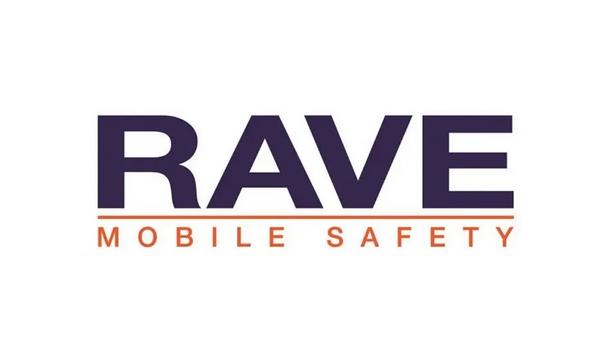Rave Mobile Safety - Experts & Thought Leaders
Latest Rave Mobile Safety news & announcements
Motorola Solutions will demonstrate at GSX 2023 event, how its integrated end-to-end video security solutions are helping organisations, such as schools, hospitals, retailers and manufacturers, operate more safely and efficiently. At the centre are the company’s new Avigilon security suite, spanning on-premise and cloud-native video security and access control, and its Pelco camera portfolio, offering one of the most extensive physical security platforms on the market today. Motorola’s video security solutions at GSX 2023 With the Avigilon security suite, we help them detect and analyse incidents as they occur" “Through the power of AI, cloud and connected end-to-end solutions, we are providing our customers with access to next-level technologies that give them the information required to make better informed decisions,” said John Kedzierski, Senior Vice President of Video Security & Access Control at Motorola Solutions. John Kedzierski adds, “With the Avigilon security suite, we help them detect and analyse incidents as they occur, which enables them to act with greater focus, accuracy and speed.” Motorola Solutions Technology Highlights at GSX 2023 Avigilon Unity On-Premise Security Suite Visible Firearm Detection (VFD): VFD is an AI-based video analytic that detects visible firearms to help security operators quickly assess and respond to a situation. When used with the Avigilon Decision Management System (DMS) platform and Motorola Solutions’ workflow automation solution, Orchestrate, security teams are empowered to properly verify alerts, initiate a site lockdown and automatically send targeted mass notifications. Avigilon Unity Video: This is the latest full-version release of the video management software for Avigilon Unity that enables security professionals to simplify how they manage multiple sites. The release features centralised role-based access control for easy organisation of user groups, single sign-on for both on-premise and cloud, as well as the ability to easily share video clips through a simple web link. Avigilon H6A and H6X cameras: These new high-resolution cameras feature AdaptAI, an edge-based analytics platform that shares alerts in Avigilon Unity Video. This technology helps security professionals quickly identify threats such as unusually large crowds; detect the sound of breaking glass, screaming, gunshots, car, fire alarms, and classify truck vehicle types. It can also help meet privacy regulations with a masking feature that tracks and blurs people and vehicles that appear on video. Avigilon Alta Cloud-Native Security Suite Single sign-on for Avigilon Alta Video and Avigilon Alta Access Control: Motorola Solutions continues to unify its new cloud-native security suite with an enhanced, integrated user experience that includes a single sign-on for streamlined operations and enhanced security. Avigilon Alta H6SL dome and bullet cameras: Avigilon continues to integrate its portfolio across on-premise and cloud. The H6SL camera now natively connects to the Avigilon Alta Aware Cloud and combines high-quality video and intelligent analytics with cloud features. Motorola Solutions exhibits future workflow integrations Motorola Solutions will also be demonstrating future workflow integrations Motorola Solutions will also be demonstrating future workflow integrations that will simplify how security teams can instantly secure areas such as schools, offices and manufacturing facilities. Lockdowns and mass notifications will be automated using Orchestrate with Avigilon Alta Access, the Rave Panic Button app and Rave Alert. Orchestrate can also send alerts to WAVE PTX, the push-to-talk group communication service that connects teams across different devices, networks and locations, and MOTOTRBO™ radios to enable broader awareness and response. Rave Mobile Safety solution for GSX attendees Rave Mobile Safety has been chosen as the mass notification platform for emergency SMS text alerts and safety information at GSX2023, in order to support the welfare of staff, exhibitors, vendors, business partners and visitors. Attendees of the conference should text GSX2023 to 672-83 to opt in for emergency notifications. Motorola Solutions is showcasing its full suite of video security, access control, mobile safety applications and alerting solutions at GSX 2023 (Avigilon & Pelco Booth #3505 and Rave Mobile Safety Booth #1923), from Sept. 11-13, 2023, in Dallas, Texas, USA.
Motorola Solutions announces it has acquired Rave Mobile Safety, a pioneer in mass notification and incident management that helps organisations and public safety agencies communicate and collaborate during emergencies. The company is based in Framingham, Massachusetts. State and local governments and enterprises, including hospitals, rely on Rave's cloud-native, customisable platform to support emergency coordination. Users can effectively communicate operational updates and alerts, such as health emergencies, lockdowns, and evacuations, so people are better informed to take appropriate action. Higher education institutions The platform is also used by thousands of K-12 schools and higher education institutions across the U.S. Rave’s panic button solution can immediately provide real-time incident details and essential data like location to 9-1-1 call takers and first responders, and its incident management solution helps to coordinate the emergency response across school safety personnel, administrators and first responders. The platform is also used by thousands of K-12 schools and higher education institutions "Motorola Solutions’ technologies strengthen the critical intersection of public safety and personal security," said Greg Brown, Chairman, and CEO, Motorola Solutions. "Our acquisition of Rave complements our portfolio with a platform specifically designed to help individuals, businesses, and public safety agencies work together in more powerful ways.” Weapons detection solutions The Rave platform will be integrated into Motorola Solutions’ technology portfolio, which includes access control, video security, body-worn cameras, critical communications, command centre software and weapons detection solutions. “Rave and Motorola Solutions share a deep understanding of communication and collaboration workflows for customers, including the essential role of mobile technology, when addressing complex and evolving safety challenges,” said Todd Piett, CEO, Rave Mobile Safety. “We’re excited to extend our reach and impact as we join a global leader in public safety and enterprise security.”
Rave Mobile Safety (Rave), provider of the critical communication and collaboration platform customers count on when it matters most, announced it has been selected by Atos Public Safety, LLC (Atos) as the Next Generation 911 (NG911) alert and warning system platform for the state of California. The win represents the ninth statewide deployment of Rave’s solutions. Selected for the company’s deep understanding of California’s complex needs of managing many different populations across diverse regions, Rave’s alerting platform will be available to hundreds of alerting authorities across the state, protecting over 39 million residents. Expanding current capabilities Rave’s highly flexible and configurable system will consolidate and expand current capabilities into one state-wide solution. This uniform platform will better meet the stringent feature, reliability, and performance requirements for a state with emergency communications needs covering everything from earthquakes, wildfires, and tsunamis to civil disturbances and major sporting events. Atos, the Prime Network Service Provider for the State’s NG911 infrastructure project, will manage the overall program. In addition to providing critical emergency alert notifications to residents and first responders, Rave will also serve as the platform for initiating the state’s Integrated Public Alert & Warning System (IPAWS) communications. Mass notification system We are proud to partner with ATOS to help protect the most populous state in the nation" “We are proud to partner with ATOS to help protect the most populous state in the nation and address the unique challenge of ensuring all residents are safe and informed, despite being spread across nearly two hundred thousand square miles with regions being impacted by entirely different events,” said Todd Piett, Rave CEO. “To do this successfully, officials need a reliable, best-in-class system that can be used anywhere, at any time with complete confidence. Rave is proud to deliver that consistency and flexibility to the state of California as it seeks to better protect and inform its residents and visitors.” Rave’s alerting platform is the mass notification system enabling governments, organisations, higher education institutions, and schools to send messages quickly and reliably in just three clicks across multiple modes of communication. Access control capability The solution seamlessly integrates with California’s NG911 system, enabling agencies to ensure phone numbers and GIS data sets are synchronised. With the platform’s role-based access control capability, emergency managers can access neighboring agencies’ systems for back-up and redundancy, ensuring seamless communication and reliability in the most stressful of circumstances. Usability and system access are further enhanced through Rave’s partnership with RapidDeploy, which provides 9-1-1 dispatchers and supervisors integrated access to Rave Alert through RapidDeploy’s cloud-based RadiusPlus mapping system deploying across the state.
Insights & Opinions from thought leaders at Rave Mobile Safety
As the world continues to become more connected, it’s becoming increasingly important to adjust security and safety procedures in the workplace. But today’s ever-evolving office environment can present unique safety and preparedness challenges. No two businesses are exactly alike, with some located in numerous buildings or spread out across campuses, while others have employees that frequently journey from different locations, work remotely or travel internationally. With this shifting environment, Rave Mobile Safety’s recent Workplace Safety and Preparedness survey asked over 500 full-time employees in various industries across the United States about their views on safety at work and emergency preparedness. Preferred safety measures Only 57 percent of respondents indicated that their workplace currently had preparedness drills in place for critical situationsThe survey looked at how employees and companies respond to various workplace emergencies: workplace violence, active shooter, medical emergency, fire, hazmat incidents, weather events and cyberattacks/system outages. Respondents provided insight on the current state of safety in their workplace, as well as how they want to be contacted when an emergency occurs. Though opinions on the preferred safety measures differed between generations and also between on-site and offsite workers, one fact remains consistent: there is much to be done to instil a better sense of safety in the workplace. While the findings show that employees feel safe in their workplace, only 57 percent of respondents indicated that their workplace currently had preparedness drills in place for critical situations. Quick thinking Of the plans currently in place, excluding fire, 57 percent of the other major emergency plans were rarely or never tested. With so few drills in place, employees are left not knowing the best ways to respond to emergencies like weather events or hazmat incidents or if their employer recommends a certain response to situations like medical emergencies. Testing these plans is essential so that all employees, whether they are new to the company or not Even if plans are in place to begin with, not ensuring your employees understand and are comfortable with how to react to certain situations, can put the organisation in harm’s way. Testing these plans is essential so that all employees, whether they are new to the company or not, have the appropriate response top of mind and their actions become second nature during a situation that will likely require quick thinking. Workplace violence Instilling regular practices will only further ensure that responses will happen seamlessly, regardless of the emergency. Beyond the general awareness of drills and practices, most surprising in the responses was the fact that 34 percent of female respondents were unaware of workplace violence emergency plans. This is particularly shocking because workplace violence is the second leading cause of death for women in the workplace, according to the U.S. Bureau of Labour Statistics. This shows an obvious lack of preparedness from organisations. It’s immensely important that employees to understand the relevant dangers of the workplace, especially when alternative could have a fatal result. The differences between baby boomers and millennials in the workplace is a common barometer showing how the workplace is continuing to change. Emergency plans Workplace violence is the second leading cause of death for women in the workplace, according to the U.S. Bureau of Labour StatisticsWhat may have worked for previous generations must be reworked and adjusted so every generation is made aware of and understands the plans and procedures in place. These changes can help make workplace safety plans fresh and continuously relevant. With that in mind, millennials currently represent the largest segment of employees unaware of emergency plans for major workplace emergencies. 38 percent of this age group are unaware of existing emergency plans, compared to just a 28 percent average of employees over the age of 35. This could be associated with the fact that some organisations are not communicating plans with newer employees or even that organisations that employ a significant number of millennials might not have plans in place at all. Affecting everyday work If the newest generation is unaware of these plans, then it is only a matter of time before Generation Z enters the workforce and is in even worse position when it comes to emergency awareness. The survey results showed that on average, workplaces use two methods of communication for emergencies Feeling safe and secure at work should not be something that workers need to focus on, however more than a quarter of respondents that work remotely said that worrying about safety is exactly what is affecting their everyday work. With that in mind, it’s even more concerning to see that there seems to be a clear divide between current methods and preferred methods of communication during an emergency. The survey results showed that on average, workplaces use two methods of communication for emergencies, with the top two being intercom system announcement/building alarm (27 percent) and email (22 percent). Mass text messages At first, these methods seem to cover both remote and in-office employees, but survey results actually showed that both groups preferred and would be better reached during other methods. While email is the second most common emergency method currently in place by organisations, it actually ranks as the fourth most preferred method at a mere 11 percent. Even with a clear preference towards communication via mass text messages by respondents (39 percent of remote workers prefer this method), less than 20 percent of companies actually take advantage of this technology. This clear disconnect shows that organisations must find what works best for their employees instead of using methods that were previously established or that are just currently being used. Preparedness plans What remains important for organisations, regardless of size or industry, is to keep emergency preparedness plans ever evolving Communication can not only be essential to alert employees to everyday situations, like office closures, but it is also imperative in preventing emergencies to escalate when they do occur. Although this survey discusses the current state of safety in the workplace, it’s that the disconnect between employee perceptions and employer polices that’s the most concerning. Companies need to take steps to understand how their employees would like to be reached during an emergency, as well as how employees would also like to reach out to management to report their own concerns. What remains important for organisations, regardless of size or industry, is to keep emergency preparedness plans ever evolving and well communicated, so your employees are confident in the emergency plans in place. By proactively planning and practicing for emergency events through table top exercises and drills, employers can demonstrate their commitment to employee safety and preparedness and build employee confidence.
Using a smart phone as an access control credential is an idea whose time has come – or has it? The flexible uses of smart phones are transforming our lives in multiple ways, and the devices are replacing everything from our alarm clocks to our wallets to our televisions. However, the transformation from using a card to using a mobile credential for access control is far from a no-brainer for many organisations, which obstacles to a fast or easy transition. We asked this week’s Expert Panel Roundtable: When will mobile credentials dominate access control, and what are the obstacles to greater adoption?
Finding the exact right technology to solve an end user’s problem is challenging, but the rewards are great when an integrator gets it right. A wide range of available product types, price levels and added features increases the likelihood of identifying a technology to solve any problem. But with so many technology and product choices in the marketplace, identifying that one solution can be akin to finding a needle in a haystack. We wondered whether a vast range of product choices is always a good thing. We asked this week’s Expert Panel Roundtable: Are security integrators and end users overwhelmed by “too many choices” related to security equipment and systems? How can they make sense of it all?
The ultimate guide to mastering key control
DownloadUsing artificial intelligence (AI) to automate physical security systems
DownloadA modern guide to data loss prevention
Download7 proven solutions for law enforcement key control and asset management
DownloadThe truth behind 9 mobile access myths
Download
















